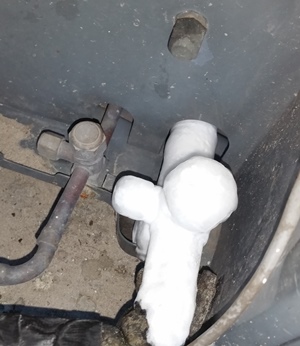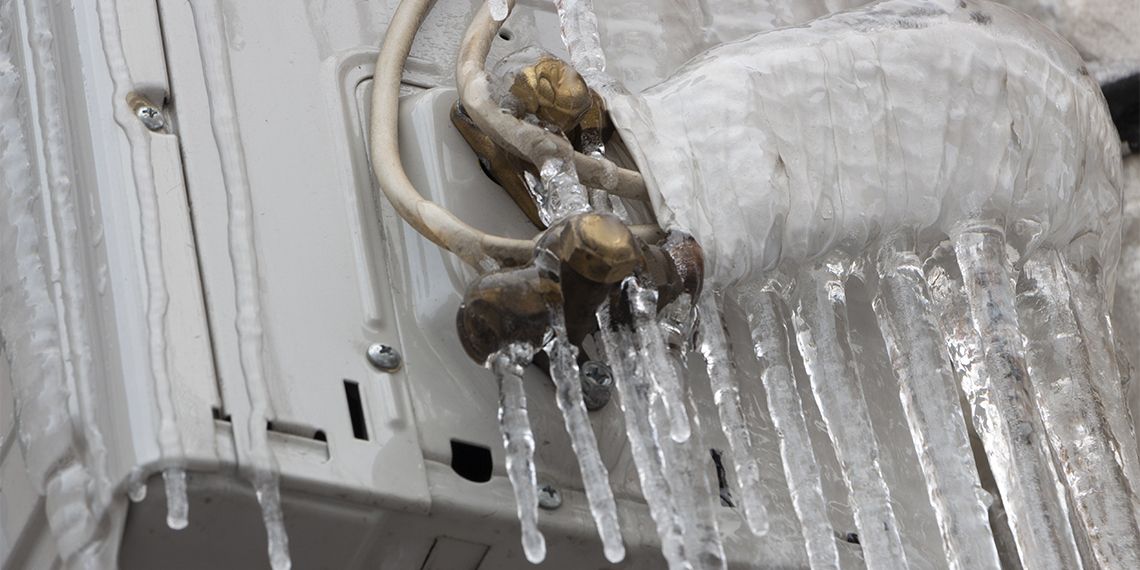We've noticed the article involving Why Is Ice On My Outside Air Conditione down the page on the web and believe it made sense to talk about it with you here.

Intro
Uncovering that your AC pipe is iced up can be concerning, specifically during warm summer season when you rely upon your air conditioner one of the most. Recognizing what to do in such a circumstance is critical to prevent additional damages to your cooling system and ensure your convenience indoors.
Understanding the Causes
Numerous aspects can contribute to the cold of an AC pipeline. Understanding these reasons can assist you address the concern efficiently.
Absence of Airflow
One typical cause of an icy AC pipeline is inadequate air flow. When the air movement over the evaporator coil is restricted, it can create the coil to drop below freezing temperature level, leading to ice formation on the pipeline.
Low Refrigerant Levels
Inadequate cooling agent levels in your air conditioning system can also lead to a frozen pipeline. Reduced refrigerant levels can create the pressure in the system to drop, causing the cold of moisture on the evaporator coil.
Cold Weather Conditions
In chillier environments, freezing temperature levels outside can add to the freezing of air conditioning pipes. If your a/c device is not effectively protected or if there are leakages in the ductwork, cool air can penetrate the system, creating the pipeline to ice up.
Dirty Air Filters
Filthy or stopped up air filters can restrict airflow in your AC system, leading to different problems, including an icy pipeline. It's vital to change or clean your air filterings system routinely to ensure proper air movement and stop ice accumulation.
Signs of a Frozen A/c Pipe
Acknowledging the signs of an icy AC pipeline is essential for punctual action.
Minimized Airflow
If you notice a considerable decrease in air flow from your vents, it can suggest an icy pipe.
Ice Buildup on the Pipe
Visible ice build-up on the refrigerant line or the evaporator coil is a clear indicator of an icy AC pipe.
Odd Sounds from the Unit
Uncommon sounds, such as hissing or bubbling, originating from your air conditioner unit can indicate that there's ice existing on the pipeline.
Immediate Actions to Take
When confronted with a frozen a/c pipeline, it's vital to act quickly to prevent further damages to your cooling system.
Switching off the air conditioner
The very first step is to shut off your air conditioning system to stop the system from running and exacerbating the concern.
Looking for Blockages
Examine the area around the interior system for any blockages that might be obstructing airflow, such as furnishings or drapes.
Thawing the Pipe
You can use mild techniques like placing towels taken in cozy water around the frozen pipeline to assist thaw it slowly.
Safety nets
Taking preventive measures can aid prevent future incidents of a frozen air conditioner pipe.
When DIY Methods Fail
If your efforts to thaw the pipe or address various other issues are not successful, it's time to contact a professional.
Value of Hiring a Professional HVAC Technician
A certified HVAC service technician has the experience and tools needed to detect and repair problems with your air conditioner system safely and efficiently.
Normal Maintenance Checks
Set up regular maintenance contact an expert HVAC professional to make certain that your AC system is running efficiently.
Altering Air Filters
On a regular basis change or cleanse your air filters to avoid air flow limitations and preserve ideal efficiency.
Protecting Exposed Pipes
If your a/c pipes are subjected to cold temperatures, take into consideration shielding them to avoid freezing during cold weather.
Seeking Professional Help
If DIY methods fall short to solve the problem or if you're unsure concerning exactly how to proceed, it's ideal to seek assistance from a certified HVAC specialist.
Conclusion
Handling an icy air conditioner pipeline can be a discouraging experience, yet understanding just how to respond can aid minimize damages and restore comfort to your home. By recognizing the causes, acknowledging the indicators, and taking prompt activity, you can successfully resolve the issue and stop future events.
Frozen AC Line: Why It Happens & What To Do About It
A frozen AC line can be a rather peculiar sight in a place like Phoenix, Arizona where nothing ever freezes. In this post, we’ll discuss what makes an air conditioner line frozen – and what you can do about it.
Dirty Air Filters
Did you know that you should be cleaning or replacing your air filters on a monthly basis? Failing to do this can result in airflow issues that, in turn, cause your evaporator coils and lines to freeze over. You’ll notice a buildup of ice on both components, although the buildup on your pipes will, of course, be more evident unless you open your air condition up to reveal the coils.
What To Do About It
Give your air filter a good cleaning if it’s reusable. If not, replace the filter outright. Next, switch your air conditioner’s fan setting on and leave it there for 2-3 hours. This will draw warm air in, helping to thaw your evaporator coil. You can also check out this article for some tips on cleaning the coils themselves if you’d like to speed the process up. Before you switch the unit back to its normal state, make sure the supply vents are completely unobstructed and free of dust or other debris.
If you keep having this issue even after replacing your filters regularly, contact a local HVAC repair company and have them inspect your evaporator coil, ductwork, and any other components that may be at fault. If you live in the Phoenix, Arizona area, give American Home Water and Air a call.
Low Refrigerant Levels/Leakage
What To Do About It
Contrary to what air conditioner “recharge” companies often tell their clients about refrigerant, it should never need to be simply refilled. You see, refrigerant runs in what experts refer to as a “closed loop.” Refrigerant really shouldn’t be leaving that loop. If it is, you’ve got a leak.
Paying someone to come and pump more refrigerant into your system (aka “recharge” it) isn’t the solution. Doing that will simply kick the can down the road. Besides, refrigerant leaks can be harmful to the environment and people in your home.
Rather, you need to take care of the leak with the help of a technician. Check out this article for some more information about dealing with air conditioners that are leaking refrigerant. Before you contact a technician, switch your thermostat to the off position. Then, switch the fan setting on and let it run for 2-3 hours so the unit can thaw.
Improper Temperature Setting
Improper temperature settings can also cause a drop in your air conditioner’s pressure. What many people don’t realize is that air conditioners are actually designed to run when temperatures have fallen above roughly 60 degrees Fahrenheit. If you run the unit when it’s cold outside, you’ll run into many issues, including frozen components.

I am very curious about Air Conditioner Frozen? How To Fix your Frozen AC Line and I am praying you enjoyed the new blog entry. Sharing is nice. You never know, you may very well be helping someone out. Thank you for your time. Don't hesitate to come visit our site back soon.
This Resource